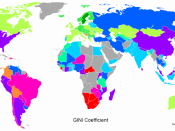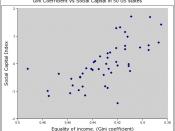Notes:
How is the distribution of income decided in a free market economy?
Market economies provide people with income as a reward for their contribution to the production process. The owners of natural resources, capital, entrepreneurial skills, or labour which is used in the production process receive income based on the value of their input. The price that is paid for inputs determines the individuals share of total output and will generally depend on how scarce or demanded the resources that they have to offer are.
Why is there inequality in the distribution of income?
As income is distributed according to ones contribution to the production process those in our society who are unable to contribute or who have a limited level of contribution (the disadvantaged) suffer from poorer incomes. At an individual level features such as ownership of resources, qualifications, motivation, skills, abilities, family size, inherited wealth, age, language, gender, sexuality, religion, education and training as well as genetically inherited characteristics and possible injuries determine ones ability to contribute to production and therefore to generate an income.
However the problem can also be looked at from a national perspective where things such as factor endowments, the size and quality of the labour force, the economic climate, stage of economic development and a nation's economic power dictate the income and distribution of income across the country as a whole. Members of society who live considerably worse than other people and who earn the lowest amounts are said to live in poverty and are usually the result of extremely wealthy individuals at the other end of the social scale. The poorer individuals are considerably disadvantaged as they do not have access to the wealth generating things that the higher classes can afford (i.e. better education, capital, etc...)
How do we measure...



You save me lots of time!
Thanks! I'm trying to understand the relationships between income redistribution and poverty, here comes your great notes!
0 out of 0 people found this comment useful.